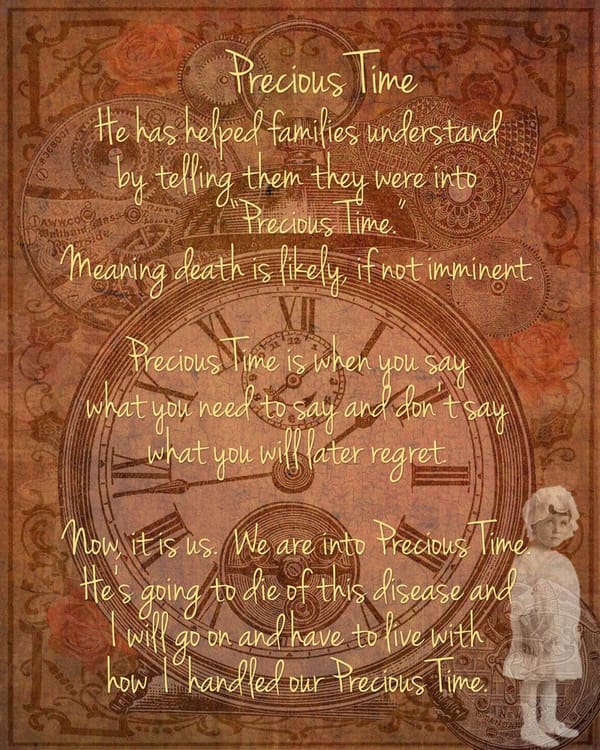Trauma and the Brain: Implications for Palliative Care Providers

Trauma is not just an emotional experience—it is a physiological and neurological event that leaves lasting imprints on the brain. For palliative care providers, understanding these changes is vital. Patients in our care may carry a history of trauma, whether from childhood adversity, war, intimate partner violence, medical interventions, or the experience of serious illness itself. These experiences can profoundly shape how patients process fear, pain, and trust in the healthcare system. By appreciating the neuroscience of trauma, we can better recognize and respond to the needs of those we serve.
The Neurology of Trauma
Three major brain regions play central roles in how trauma is processed: the prefrontal cortex, the hippocampus, and the amygdala. Each is uniquely affected, often leaving patients with patterns of thought, memory, and emotional reactivity that complicate care.
Prefrontal Cortex: The Seat of Regulation
The prefrontal cortex is responsible for rational thought, judgment, and emotional regulation. It helps suppress overwhelming fear responses from the amygdala and supports impulse control. Research has shown that individuals with PTSD often demonstrate reduced volume and connectivity in this region. For palliative care patients with trauma histories, this can translate into difficulties making medical decisions, controlling impulses, or engaging in complex discussions about advance care planning. They may appear avoidant, indecisive, or overwhelmed—behaviors that are neurological in origin, not signs of noncompliance.
Hippocampus: Memory and Context
The hippocampus allows us to form coherent memories and distinguish between past and present. In trauma, this area often shrinks due to prolonged stress exposure. The result is fragmented memory, flashbacks, and difficulty contextualizing experiences. A hospice patient with a history of trauma may re-experience old events as if they are happening now, sometimes triggered by medical procedures, certain medications, or even the environment of care. This can lead to agitation, mistrust of caregivers, or withdrawal. Recognizing these responses as trauma-related rather than simply “confusion” is critical.
Amygdala: The Alarm System
The amygdala is the brain’s survival center, responsible for fight-or-flight responses. In trauma, this area becomes hyperactive. A patient may show exaggerated anxiety, hypervigilance, or emotional reactivity, even to seemingly minor triggers. For providers, this can mean that ordinary clinical interactions—such as adjusting an oxygen mask or administering an injection—provoke disproportionate distress. The patient’s reaction is not simply fear of the present moment, but a neurobiological echo of prior trauma.
Why This Matters in Palliative Care
Patients facing serious illness are already navigating existential fear and physical vulnerability. When trauma overlays these experiences, care can become particularly challenging. Misinterpreting trauma-related behaviors as resistance, confusion, or non-cooperation risks further alienating patients and families. Instead, a trauma-informed approach reframes these reactions as adaptive survival mechanisms rooted in neurobiology.
For example:
• A veteran with advanced cancer who refuses morphine may not be “drug-seeking” or “noncompliant,” but rather reliving battlefield trauma linked to altered consciousness.
• A patient with dementia who lashes out during bathing may be re-experiencing childhood abuse, triggered by vulnerability and touch.
• A survivor of domestic violence may interpret medical authority figures as threatening, withdrawing from conversations about prognosis or hospice eligibility.
By contextualizing these responses through the lens of trauma, we open pathways to compassion, trust, and more effective symptom management.
Approaches for Providers
Trauma-informed palliative care requires both awareness and practice adjustments:
• Safety and Trust: Ensure predictable, transparent communication. Explain each step of care before it happens. Avoid surprises.
• Empowerment: Offer choices, however small—such as whether a patient prefers medication with water or juice. This restores a sense of control.
• Mindful Communication: Use calm, non-threatening tone and body language. Allow time for responses, especially in patients with slowed cognition or PTSD.
• Therapeutic Integration: Incorporate mindfulness, grounding techniques, or referrals to trauma-trained counselors. Even brief interventions can reduce distress.
• Team Awareness: Educate interdisciplinary teams—nurses, aides, chaplains, and social workers—on the neurological underpinnings of trauma. Aligning perspectives prevents mislabeling patient behaviors.
Moving Forward
Recognizing the impact of trauma on the brain is more than an academic exercise—it is a moral imperative in palliative care. It helps us understand the “why” behind patient behaviors and guides us toward approaches that reduce suffering. As providers, our goal is not only to manage pain and symptoms but to hold space for the profound human stories interwoven with illness. By adopting a trauma-informed lens, we can meet patients where they are, honor their resilience, and walk with them toward comfort, dignity, and peace.
References
Bremner, J.D., 2006. Traumatic stress: effects on the brain. Dialogues in Clinical Neuroscience, 8(4), pp.445–461.
McEwen, B.S. & Morrison, J.H., 2013. The brain on stress: vulnerability and plasticity of the prefrontal cortex over the life course. Neuron, 79(1), pp.16–29.
Bremner, J.D., Randall, P., Scott, T.M., Bronen, R.A., Seibyl, J.P., Southwick, S.M., et al., 1995. MRI-based measurement of hippocampal volume in patients with combat-related posttraumatic stress disorder. American Journal of Psychiatry, 152(7), pp.973–981.
Karl, A., Schaefer, M., Malta, L.S., Dörfel, D., Rohleder, N. & Werner, A., 2006. A meta-analysis of structural brain abnormalities in PTSD. Neuroscience & Biobehavioral Reviews, 30(7), pp.1004–1031.
Shin, L.M., Rauch, S.L. & Pitman, R.K., 2006. Amygdala, medial prefrontal cortex, and hippocampal function in PTSD. Annals of the New York Academy of Sciences, 1071(1), pp.67–79.
Shalev, A.Y., Liberzon, I. & Marmar, C., 2017. Post-traumatic stress disorder. New England Journal of Medicine, 376(25), pp.2459–2469.
Agency for Healthcare Research and Quality (AHRQ), 2025. Trauma-Informed Care: A Systematic Review. AHRQ Publication No. 25-EHC007. Rockville, MD: AHRQ.





